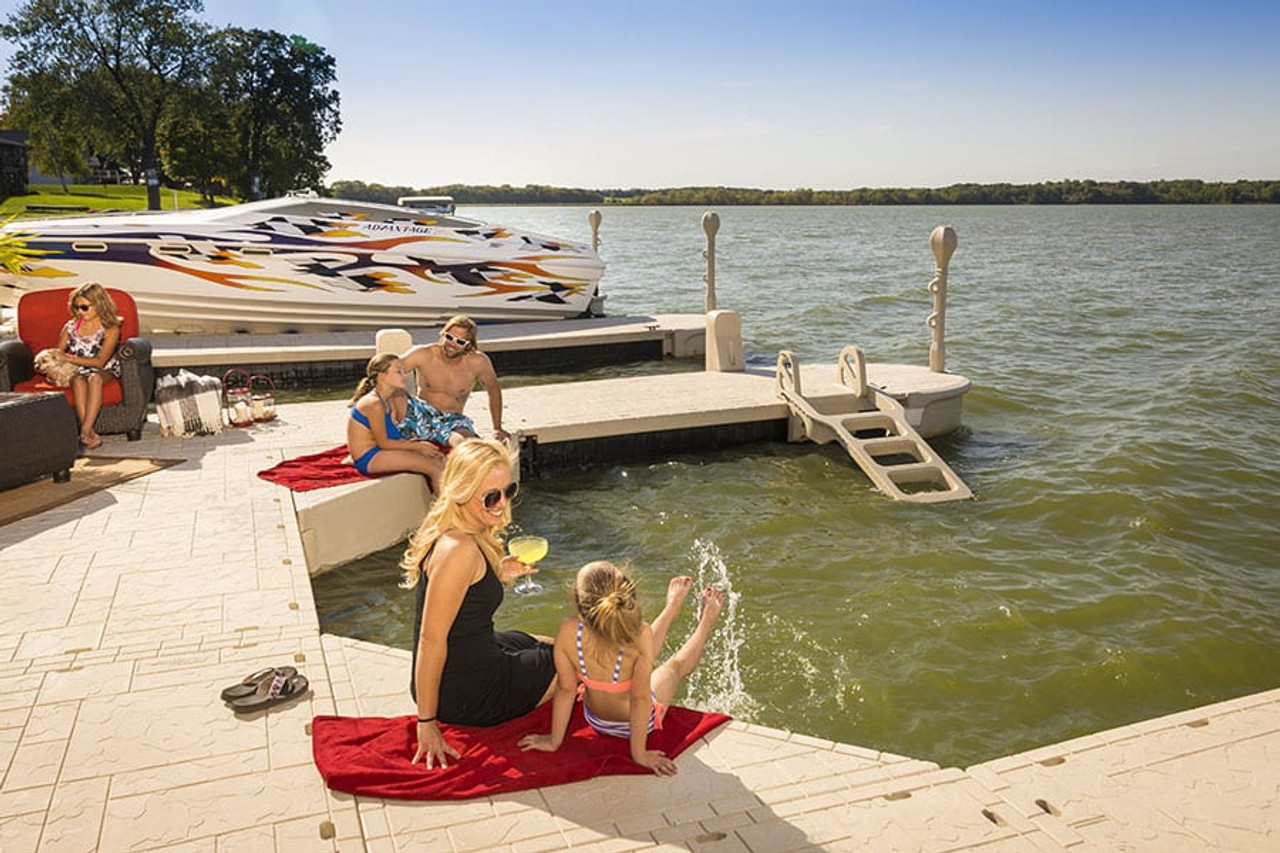Discover the Series Of Floating Dock Providers Designed to Suit Every Seafarer's Demands
Produce the Perfect Docking Solution With Floating Docks
Floating docks present a versatile option for a range of maritime needs, adjusting seamlessly to varying water degrees and varied vessel types. As we check out the vital aspects that contribute to the effectiveness of floating docks, numerous vital variables regarding stability and upkeep will certainly arise, increasing inquiries about exactly how to optimize your docking experience.

Advantages of Floating Docks
Floating docks deal many benefits that make them an optimal choice for different maritime applications. Among the key advantages is their flexibility to transforming water levels. Unlike taken care of docks, floating docks fluctuate with the tide, ensuring consistent availability for vessels. This attribute is specifically essential in areas vulnerable to considerable tidal variations or seasonal water level modifications.
In addition, floating docks are typically much easier and quicker to install contrasted to typical fixed structures. Their modular design allows for uncomplicated setting up and disassembly, promoting upkeep and moving when needed. This flexibility is specifically beneficial for short-term applications or in environments where problems might alter.
Floating docks likewise have a tendency to be more eco-friendly, as they decrease disruption to the seabed and surrounding water ecosystems. Their buoyant nature lowers the threat of damage to aquatic life, promoting a healthier atmosphere. Moreover, these docks can be personalized to accommodate numerous vessel sizes, making certain that they meet details operational requirements - floating docks.
Eventually, the mix of adaptability, simplicity of setup, and ecological considerations makes floating docks a very effective service for a wide variety of maritime demands.
Choosing the Right Materials
Picking the suitable products for floating docks is vital to ensure stability, toughness, and longevity. The choice of materials directly impacts the dock's performance in different environmental conditions, including exposure to water, sunlight, and prospective wear from aquatic website traffic.
Usual materials utilized for floating docks consist of light weight aluminum, timber, and high-density polyethylene (HDPE) Light weight aluminum is lightweight, corrosion-resistant, and requires minimal maintenance, making it an outstanding option for durability. Its initial cost can be greater contrasted to other materials.
Timber, while cosmetically attractive and supplying a typical appearance, can be vulnerable to rot and insect damages if not correctly treated. Therefore, using pressure-treated timber or naturally durable varieties like cedar or redwood can alleviate these problems.
HDPE is a prominent selection as a result of its resistance to UV rays and chemicals, in addition to being eco-friendly. floating dock company. It is available and light-weight in various shades, enabling customization
Inevitably, the best product option will certainly depend upon certain demands, consisting of budget, desired visual appeals, and environmental factors to consider. Careful analysis of these elements will certainly lead to a durable and effective floating dock service.
Layout Considerations for Stability
When making floating docks, ensuring security is a basic aspect that can significantly affect their functionality and safety. Stability in floating dock design is influenced by various factors, including buoyancy, weight distribution, and the arrangement of components.
Weight circulation is vital; uniformly distributing lots throughout the dock stops tilting and boosts security. Larger designs can provide raised security, particularly in harsh water conditions, while longer docks might require added supports see this to protect against sagging.
Another essential factor to consider is the ecological impact, consisting of wave action and wind. Including functions such as sidewalls or skirting can help alleviate the effects of ecological forces, keeping stability in adverse problems. Inevitably, a combination of thoughtful layout, material choice, and understanding of ecological elements will certainly yield a floating dock that fulfills both stability and safety and security requirements.
Installment Tips and Techniques

Following, protect the required licenses and comply with local regulations, which might determine setup techniques and environmental considerations. If needed, engage a qualified contractor experienced in floating dock setups. Use top quality materials made for aquatic atmospheres to improve resilience and longevity.
When placing the dock, straighten it identical to the coastline to promote very easy gain access to. Make certain that the anchoring system is durable, employing cinder block or helical supports to stabilize the dock versus wind and wave activity. It's vital to represent seasonal water level changes, including possible ice motion in colder environments.
Throughout the installation, double-check the dock's floatation and security before settling the anchoring. On a regular basis examine the installment for any type of indicators of wear or damage. By adhering to these ideas and techniques, you can attain a protected, useful, and aesthetically pleasing floating dock installation that fulfills your needs.
Upkeep and Treatment Guidelines
Preserving and caring for floating docks is essential to extending their life-span and ensuring safe usage. Routine assessments need to be performed to identify any signs of wear, damage, or marine growth. Try to find splits, loosened installations, or discolored areas on the dock's surface, as these problems can jeopardize structural stability.
Cleansing is essential. Use a pressure washing machine to remove algae, barnacles, and debris, which can build up with time. For persistent development, take into consideration eco friendly cleaning agents that will not harm marine life.
In addition, examine the mooring lines and supports regularly to guarantee they are complimentary and safe from rust. Replace any frayed or harmed lines promptly to keep security.
Throughout extreme weather, such as storms or freezing problems, take preventive procedures. Protect the dock with additional mooring lines and, if feasible, get rid of any More about the author kind of removable elements to stop damage.
Verdict
In verdict, the application of floating docks provides a efficient and flexible docking solution appropriate for numerous maritime applications. With appropriate installation and normal maintenance, floating docks can give trustworthy and effective docking experiences for a large variety of vessels.
As we explore the important components that contribute to the performance of floating docks, numerous key elements regarding security and maintenance will emerge, increasing inquiries about exactly how to maximize your docking experience. Unlike fixed docks, floating docks surge and autumn with the trend, ensuring consistent availability for vessels.When making floating docks, ensuring stability is a fundamental aspect that can substantially influence their capability and safety and security. Stability in floating dock layout is affected by various factors, including buoyancy, weight circulation, and the setup of elements. Inevitably, a mix of thoughtful design, product option, and understanding of ecological factors will certainly yield a drifting dock that fulfills both stability and security needs.